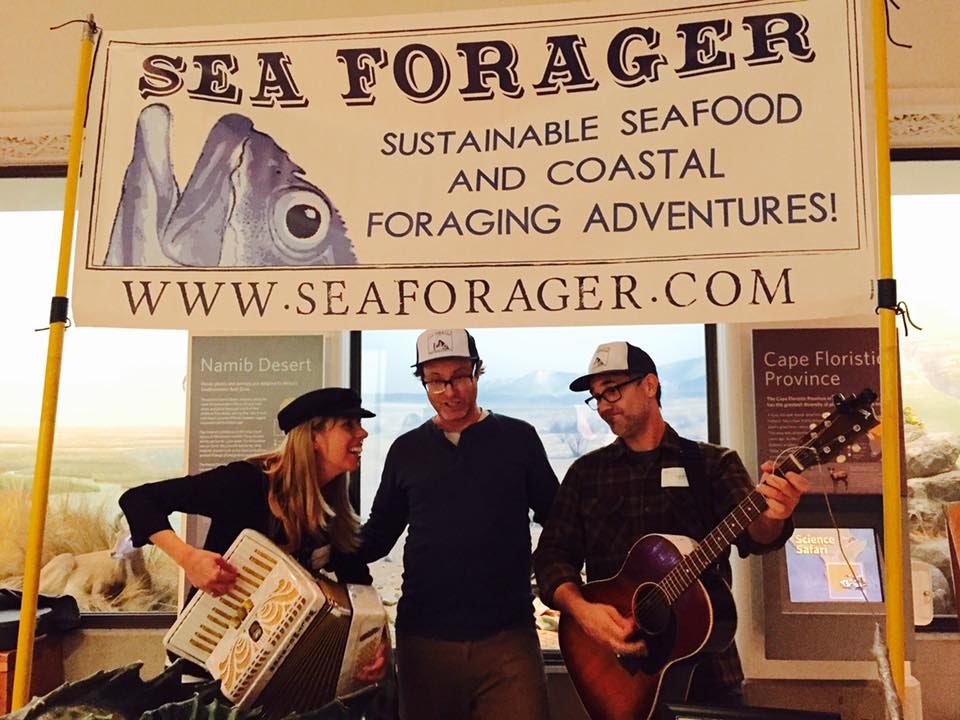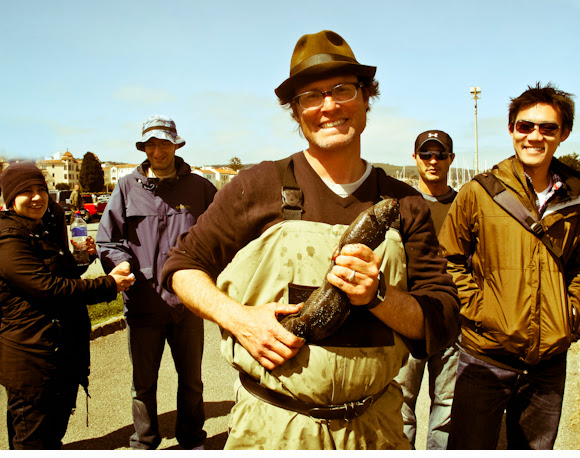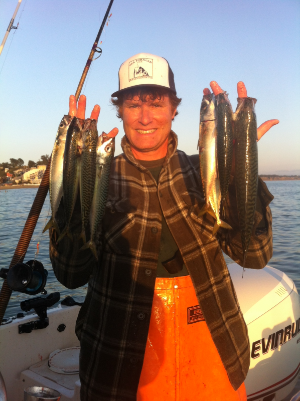The Bay’s Bounty Beckons

The following appears in the October issue of California Sportsman:
By Chris Cocoles
I had a feeling that Kirk Lombard, the author of The Sea Forager’s Guide to the Northern California Coast, was going to provide a colorful conversation for me. He didn’t disappoint. When I asked the Moss Beach resident if writing his book was a hobby project, he turned the question on me to ask if I’d written a book – I haven’t – and his response set the tone for a rather fun interview.
“The only reason I asked you that is because, what I’ve learned in writing my first book is, you’d have to be an (expletive) lunatic to do that as a hobby,” Lombard says. “It’s a lot of work, man.”
Lombard’s obsession with all things fish was born in his native New York – he could walk out of his house and cast a line into the Hudson River in minutes. He eventually found his career calling after he moved to the Bay Area, where he first worked for the Pacific States Marine Fisheries Commission and ultimately opened a sustainable seafood business, the Sea Forager(seaforager.com) with his wife, Camilla, and their children.
Lombard’s appreciation for the bounty of edible critters that congregate in the saltwater muck of San Francisco Bay and along the Pacific shoreline also inspired him over the years to host tours that educates visitors about these natural resources.
“If I have any detractors out there, what they would say is that I’ve given away all the secrets,” Lombard says. “And they’re wrong. Those are people who haven’t done my tours. Because my tours talk about the resources, the history of the bay, and I talk about what you should harvest and what you shouldn’t be harvesting and how your harvesting might impact populations.”
And as educational as it gets, spend some time with Lombard – either on the phone for an hour or traversing around some coastal tide pools – and you’re going to get plenty of dry humor and entertainment.
Lombard chatted with us about his love for fishing, music and baseball – his band’s name, Rube Waddell, honors an early 20th century big-league baseball player who was one of the most bizarre characters the game has ever seen. Lombard provides quite a thrill ride, regardless of the content.
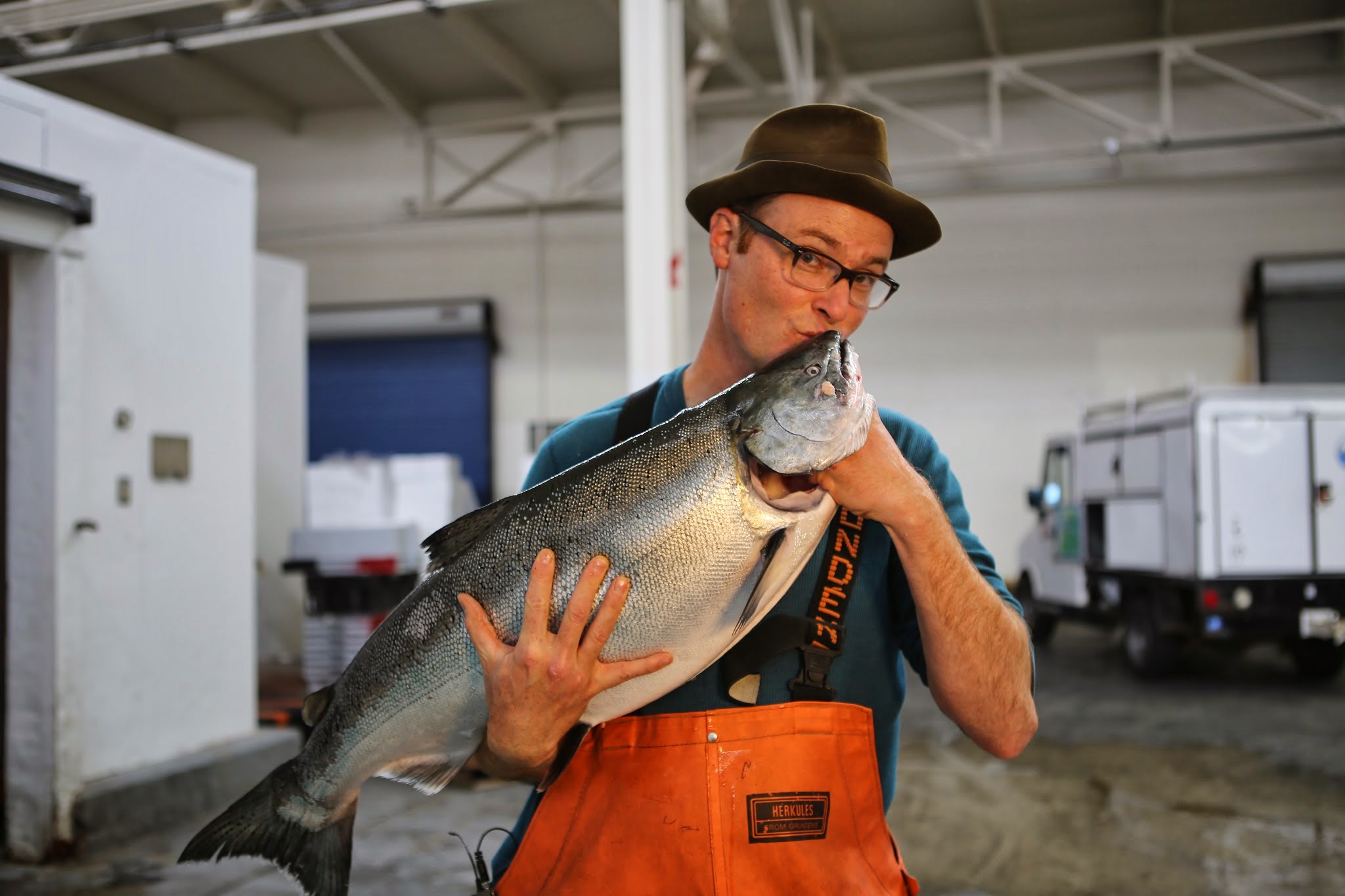
Chris Cocoles What was your inspiration behind your book?
Kirk Lombard The popularity of this term “foraging” is kind of a hip term now. Of course, everyone else has been doing this for years now. There’s a group out there called Forage SF and foraging workships and all kinds of sh*t going on. I want people to appreciate the resource rather than think of it as something to hunt down and kill. There are a lot of chapters in that book that make you think, “I don’t even want to kill this thing now.” And that makes me happy.
CC Where did your love for fish and fishing come from?
KL When I was a kid, there were a lot of kids who would fish for trout and bass in the areas where I would spend my summers. And I became the guy who caught the hellgrammites [aquatic insects]; that was sort of my passion. But it really came from my grandfather. I grew up in New York, but he was born in Salinas and raised in Santa Cruz. He fished Monterey and in the rivers and used to tell me stories – great fish stories. And I was so in love with the man to begin with and he loved talking about the outdoors. [Lombard says his grandfather also acted on Broadway and once played basketball against famed California author John Steinbeck.] When I moved out to California it was a natural transition because my grandfather would talk so much about the salmon and steelhead out here and the rockfish offshore. And where grew up in New York we lived across the street from the Hudson River and used to fish for bluefish – we called them snappers. As a kid I was into fly fishing.
CC Did you always want to be involved professionally in the seafood industry?
KL I worked with juvenile delinquents – kids who had been kicked out of high school – either as a counselor or art teacher, and I had a band, and that was my main gig for years. I got burned out on the (teaching) and I applied for a job with the Pacific States Marine Fisheries Commission. And can you believe this? My job was to canvas the Bay Area shorelines, find people who were fishing, conduct a brief interview with them, identify, weigh and measure all the catch and do a questionnaire, and I did that for about six years. I was already so crazy about all this stuff and the coastal resources – fishing and the culture of the fishing. I kind of fed my own passion.
CC Tell me about your experience with “poke poling.”
KL It’s a technique that kind of opened my eyes. I was standing on this rock all day with my line way out in the water, because I thought you had to cast really far in order to catch something. On the coast here you learn that fish at low tide just go under a rock and don’t necessarily go out with the tide. My line was way out in the water and I was catching nothing, losing all my gear on snags. And this little skinny guy, with a sh*tty beat-up old wetsuit, came wading up, hopping along the rocks with a stick and a burlap sack; that’s all he had. And he goes right to the rock I was standing on and he puts the stick under the rock and catches a cabezon the size of my leg. Here I was with my line 100 feet out in the water, losing $20 worth of gear every time I went out there and catching maybe one little perch. And here’s this guy with a bag of fish. OK, you don’t have to show me that twice.
I talked to the guy and he introduced himself to me as “Cambodian Stan” and in my band I wrote a song about him [youtube.com/watch?v=
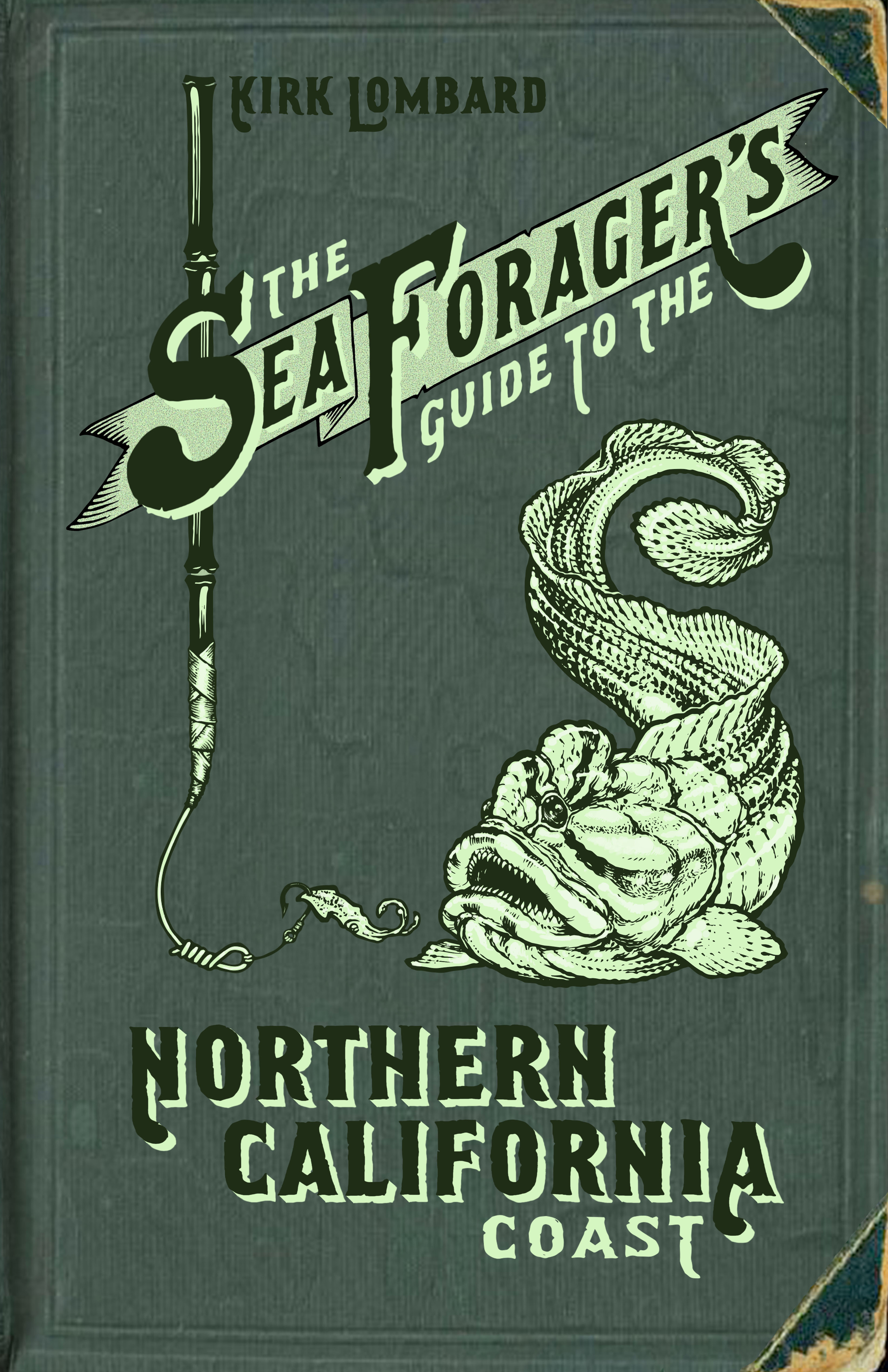

CC Did you get a lot out of all the other people you encountered when doing your research?
KL When I was doing the survey I met a lot of fishermen and I learned a lot. But all the guys who were doing what I did, they pretty much got laid off. And I was really happy doing that and I wanted to figure out ways to communicate with the public and talk about seafood and doing all the stuff that I liked about that job, so I started doing these classes. I aligned myself with a group called forageSF. [Foragesf.com is an organization that offers outings ranging from mushroom picking to nature walks for edible plants to creating wild plant-based cocktails.] I saw how there was this huge population of people moving into San Francisco who basically didn’t have my grandfather. A lot of the people who would come in and do the tours might be people who had fished in Maryland and upstate New York, moved here and they want to catch fish but don’t know anything about the (Northern California) coast. My tour got a lot of positive reviews and people signed up who heard that this was a very entertaining tour. I was able to start doing them on my own, but I still do a few tours for forageSF every year.
CC Is your Sea Forager Seafood business that you and Camilla run the perfect way for you to promote the idea of eating wild and where people can either fish or forage for food in the Bay Area’s backyard?
KL I really try to go with the most sustainable product I can, which typically is from guys in small boats fishing in ways that minimize the impact on the environment. That’s what I tend to favor and what I try to educate people about and about local resources. But I’m not providing monkeyface eels for the 600 people who subscribe to my service. [The monkeyface eel – not an eel at all – is tidal basin-dwelling fish and one of Lombard’s favorite local inhabitants in the Bay Area’s coastal ecosystem.] But our seafood business is what pays the bills.
CC So I have to ask you about your four-piece band, Rube Waddell. Where did the musician in you come from?
KL So I was kind of a down-and-out artist in San Francisco in the ‘90s. [Laughs.] I was recovering from a bad breakup and kind of getting into doing my own stuff. And then I met a sort of equally withdrawn crazy man, my bud Larry. And we just started playing music together and we wanted to do something untraditional. Well, that’s not exactly true; we wanted to make more of our own instruments and find ones that sounded good. And we started banging on pots and pans and I would make these one-string guitars out of two-by-fours and cans and nails. And we wanted (the sound) to be kind of meaner. [Laughs.] I figured out that I could build little microphones and attach them to my one-string slide guitars and I could distort the hell out of them. We would play this unholy music and go out onto street corners and do this.
CC The band name pays homage to a rather colorful pitcher who played around the turn of the 20th century. Where did you get the inspiration to name the band after such an eccentric man?
KL Both Larry and I were diehard baseball fans. The name of our band had been Hellbenders, which is a type of salamander that lives in rivers of the South and they’re huge and ugly. And we were hanging out one night with a bunch of other musicians and I told the story of Rube Waddell, being the baseball nerd that I was. We were drunk off our asses and everybody was laughing because he was so insane and crazy. [Waddell was a six-time American League strikeout leader and inducted (posthumously) into the Baseball Hall of Fame in 1946. But he was more known for doing backflips on the mound, chasing fire trucks that sped past the ballpark during games and being distracted by fans and opposing players who held up puppies to distract him. He would also sometimes leave during a game or not even show up so he could go fishing.] In telling that story to a bunch of musicians getting drunk, Larry said, “Hey, man, why don’t we just make that the name of the band? Let’s call ourselves Rube Waddell and live the life of Rube Waddell. We’ll be drunken lunatics, talking about baseball and going fishing more.”
CC What message do you hope you sent in writing this book (see excerpt, California Sportsman, September 2016)?
KL There was another book that was written years ago called Foraging The Pacific Coast, by Peter Howorth. And I got a lot out of that book, a sense of appreciating what’s out there on our coast. And if I can just relay that appreciation to other people, I’m more than happy. CS
Editor’s note: Throughout October, California Sportsman readers can take 30 percent off the price of Kirk Lombard’s book with the coupon code CASM when you order it online at heydaybooks
.com. For more on the Lombards’ sustainable seafood business, go to seaforager.com; his band’s website is rubewaddell.org.

